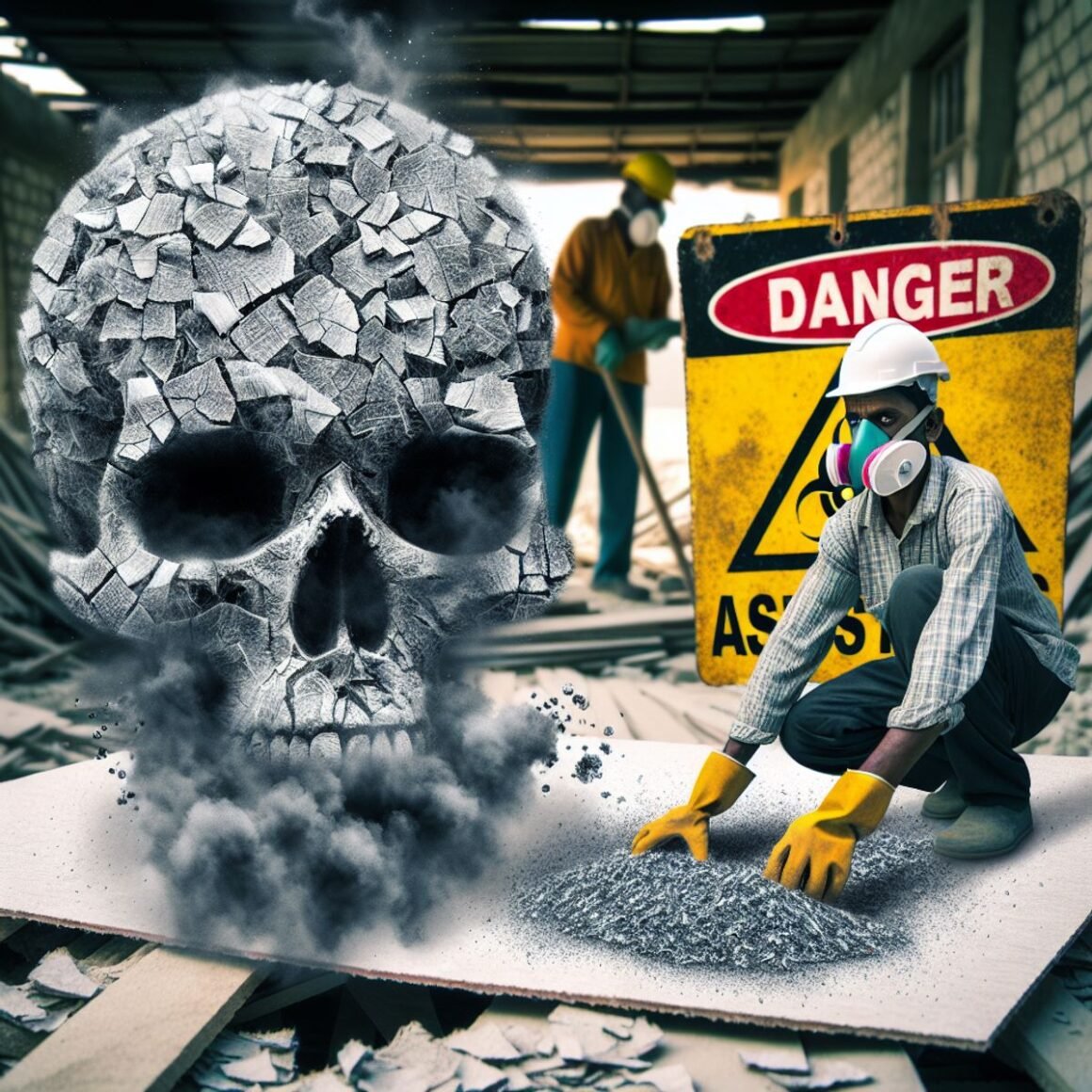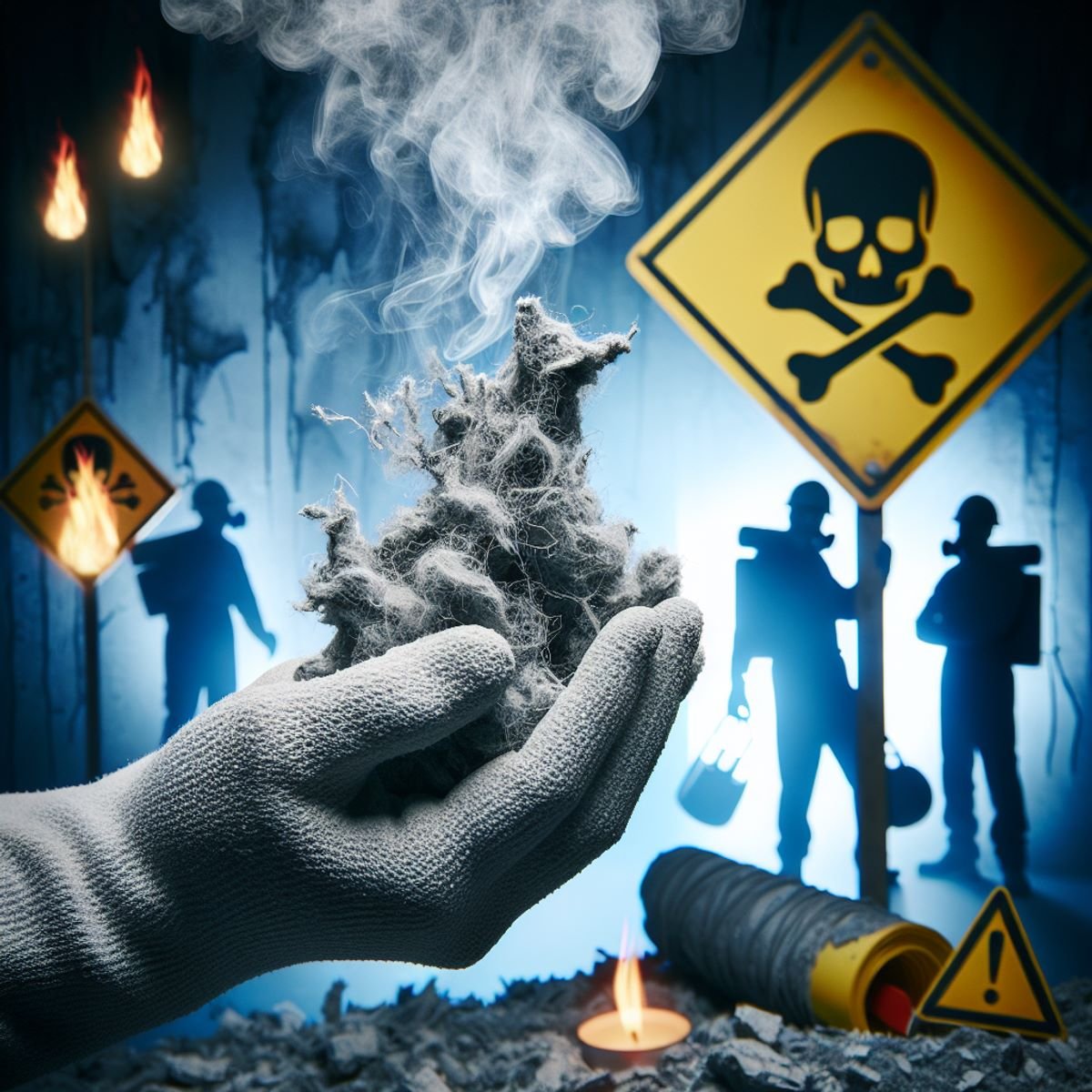Table of Contents Show
Lung cancer is the most common type of cancer. In 2018 alone, it led to more than 2 million deaths worldwide.
Aside from smoking, which is the number one risk factor, it can also be due to radiation therapy, secondhand smoke, or air pollution. Exposure to certain carcinogens such as asbestos can also increase your risk.
What is asbestos? Where can it be found in the home? Want to know?
If so, you’re on the right page. We’ll review everything you need to know about it below. Learn more about the topic by reading the rest of the post!
Understanding Asbestos: The Miracle Material With a Deadly Side
Asbestos is a naturally occurring silicate mineral. It is made up of soft and flexible fibers, which are resistant to heat, electricity, and corrosion. This unique combination of properties gives it several practical applications, including:
- Roof shingles
- Insulation
- Floor tiles
Despite its practical uses, asbestos is a double-edged sword. Although it possesses beneficial properties that make it ideal for construction and other industries, its toxicity can pose serious health risks.
The Toxicity of Asbestos
The danger lies in the fine fibrous nature of the mineral. When materials containing asbestos are disturbed or damaged, they release tiny asbestos fibers into the air. These fibers can easily be inhaled or ingested, and once inside the body, they can become trapped in the lungs or stomach.
Over time, these trapped fibers can cause inflammation and scarring within these organs. This damage may take many years to become apparent, but when it does, the outcomes can be severe.
The Link Between Asbestos and Lung Cancer
The most serious health issue associated with asbestos exposure is lung cancer. This happens when the damage caused by asbestos fibers extends to our genetic material.
“Ultimately, it’s this genetic change that can cause lung cancer.”
When asbestos fibers lodge in the lung tissue and cause enough inflammation and scarring, it may eventually disrupt the normal functioning of cells and lead to changes in cell DNA. These changes allow cells to grow uncontrollably, leading to cancer.
In summary, while asbestos has many properties that make it useful in various industries, its potential to cause serious health problems like lung cancer cannot be overlooked. Homeowners and builders alike need to be aware of where asbestos may be found in residential structures, particularly older buildings built before restrictions were placed on its use.
Identifying Potential Asbestos Locations in Your Home
While asbestos is no longer used in new residential constructions, its prevalence in homes built up until the 1970s means that it could still be lurking in your property. Asbestos was widely used due to its desirable properties such as heat resistance, strength, and insulation capacity. However, its potential health risks have since outweighed these benefits leading to its discontinued use.
Understanding where asbestos might be hiding in your home can help you take the necessary precautions when renovating or doing maintenance work. Some of the common places where you might find asbestos include:
- Textured Paint: It was used to create decorative finishes on ceilings and walls.
- Floor Tiles: Particularly those measuring 9 by 9 inches, which were popular from the 1920s to the 1960s.
- Spray-On Insulation: This was commonly applied on ceilings and walls for soundproofing or fire resistance.
- Roof Shingles and Siding: Asbestos cement was a popular choice due to its durability.
- Cement and Steam Pipes: Asbestos was often used for insulation purposes.
Please note that this list is not exhaustive; there are many other potential sources of asbestos in older homes.
When planning renovations, it’s vital to bear these potential asbestos locations in mind. Should you suspect the presence of asbestos, it’s strongly advised to get a professional opinion before proceeding with any work.
Asbestos poses a significant health risk when it’s disturbed, releasing tiny fibers into the air that can be inhaled – this is something you want to avoid! The last thing anyone wants during a simple renovation project is unwittingly exposing themselves, their families, or neighbors to dangerous amounts of this harmful carcinogen.
Remember: When dealing with potential asbestos materials, safety should always come first.
What Should I Do If I Suspect Asbestos in My Home?
Discovering potential asbestos in your living space can be alarming. It’s important to remember that asbestos is only dangerous when disturbed, causing it to release harmful fibers into the air. Therefore, if you suspect its presence, there are specific steps you should follow to ensure your safety:
- Don’t Touch: Even if the material containing asbestos appears to be in good condition, refrain from handling it. Doing so could disturb the asbestos and release dangerous fibers into the air.
- Limit Access: If possible, try to limit access to the area where you suspect asbestos might be present. This will reduce the risk of accidental disturbance until a professional can assess the situation.
- Contact a Professional: Reach out to trained professionals who specialize in asbestos identification and removal. Companies such as Surfco Restoration & Construction LLC have the necessary expertise and equipment to handle these situations safely.
“Remember, disturbing asbestos by yourself not only puts you at risk, but also those living or working with you.“
The above guidelines are aimed at protecting you and your loved ones from potential health risks associated with asbestos exposure. The key takeaway is that safety should always come first when dealing with potential asbestos materials.
Regardless of whether you’re planning a renovation or just stumbled upon a suspicious material during your spring cleaning, always resort to caution when dealing with older materials that might contain asbestos.
This procedure not only ensures your safety but also complies with local regulations regarding asbestos handling and disposal.
Identifying Asbestos: Not a DIY Task
Asbestos can be a hidden hazard in various materials, especially in older buildings. It’s crucial to understand that asbestos is not always easy to identify by sight. Despite its potential dangers, it often looks like ordinary building materials, making it difficult for untrained eyes to detect.
Why Can’t I Identify Asbestos Myself?
The microscopic fibers that make up asbestos are invisible to the naked eye. This makes it impossible to determine if a material contains asbestos without scientific testing. You might be tempted to collect a sample yourself and send it off to a laboratory for analysis. However, this process is fraught with danger.
Disturbing asbestos-containing materials can release harmful fibers into the air, putting your health at risk. Therefore, this task should never be undertaken lightly or without proper safety measures.
Remember: Asbestos identification is not a do-it-yourself task.
The Safe Approach: Hire a Trained Professional
The safest and most effective way to determine if your home or workplace contains asbestos is to hire a trained professional. These experts have the necessary knowledge and experience to handle asbestos safely.
Professional asbestos inspectors follow strict protocols when collecting samples. They use specialized equipment and protective clothing to minimize their exposure and prevent the spread of fibers during the process.
Moreover, they know exactly where to look for asbestos, which can be present in various places such as:
- Insulation materials
- Floor tiles
- Ceiling tiles
- Pipe cement
- Joint compound used for seams between pieces of sheetrock
In addition, professionals can interpret lab results accurately and advise on the best course of action if asbestos is found.
By hiring a professional, you’re ensuring that your property is inspected thoroughly and safely for any potential asbestos hazard. This approach prioritizes your safety while maintaining compliance with local regulations regarding asbestos detection and handling.
Take precautions when dealing with potential asbestos materials. Your health and safety should always come first.
Protecting You and Your Family From Asbestos
Understanding asbestos and its potential dangers is the first step toward protecting yourself and your loved ones. We’ve answered the basic question, “What is asbestos?” but there’s more to it than that.
Asbestos, a natural mineral known for its heat resistance and insulating properties, was extensively used in construction materials until the late 20th century. Disturbing asbestos-containing materials can release harmful fibers into the air, posing a significant health risk.
If you suspect an item or material in your home contains asbestos, it’s crucial not to disturb it. Here’s why:
- Asbestos fibers are microscopic and can easily become airborne if disturbed.
- Inhaling these fibers can lead to serious health conditions over time.
- It’s difficult to confirm the presence of asbestos without laboratory testing.
Given these risks, it’s always recommended to call a professional if you suspect something may contain asbestos. Professionals come equipped with the necessary knowledge, tools, and protective gear to safely handle potential asbestos materials.
Never attempt to remove suspected asbestos materials yourself! This cannot be emphasized enough. While it may seem like a cost-saving measure initially, the potential health risks far outweigh any financial savings.
Remember: When it comes to asbestos, caution is paramount. Stay informed; stay safe!
Conclusion
Asbestos is a naturally occurring mineral with properties that have made it desirable in various industries, particularly construction. However, its microscopic fibers can pose serious health risks when inhaled or ingested, including lung cancer. Despite its discontinuation in new residential constructions, asbestos can still be found in homes built up until the 1970s. As such, homeowners must be aware of potential asbestos locations and take necessary precautions when planning renovations or maintenance work.
Asbestos is not easily identifiable by sight and disturbing it can release harmful fibers into the air. Therefore, identifying and handling asbestos should not be a DIY task. If you suspect the presence of asbestos in your home, refrain from touching it and limit access to the suspected area until a professional can assess the situation. Trained professionals are equipped with the knowledge and tools to handle these situations safely and comply with local regulations regarding asbestos handling and disposal.
Understanding asbestos and its potential dangers is key to protecting yourself and your loved ones. It’s always recommended to call a professional if you suspect something may contain asbestos. While removing suspected asbestos materials yourself may seem like a cost-saving measure at first, the potential health risks far outweigh any financial savings. Stay informed, stay safe!
FAQs(Frequently Asked Questions)
Asbestos is a naturally occurring silicate mineral that is commonly used in building materials due to its heat resistance and durability.
Exposure to asbestos can lead to serious health issues, including lung cancer and mesothelioma, due to the fine-fibrous nature of the mineral.
While asbestos is no longer used in new residential construction, it may still be present in older homes in materials such as insulation, flooring, or ceiling tiles. It’s important to hire a trained professional for proper identification.
If you suspect asbestos in your living space, it is crucial to avoid disturbing any materials that may contain asbestos. Contact a licensed professional who can conduct testing and safely remove any hazardous materials if necessary.
The microscopic fibers that makeup asbestos are invisible to the naked eye, making it impossible for untrained individuals to accurately identify its presence. It’s essential to rely on the expertise of trained professionals for proper detection and handling.
Understanding the potential dangers of asbestos and ensuring your home is free from any hazardous materials is the first step in protecting your family. Hiring a trained professional to inspect and safely remove any asbestos-containing materials is crucial for maintaining a safe living environment.
Citation
- Benarde, Melvin A. 2018. Asbestos The Hazardous Fiber. CRC Press.
- Smith, Dorsett D. 2015. The Health Effects of Asbestos. CRC Press.
- Woodson, R. Dodge. 2012. Construction Hazardous Materials Compliance Guide. Elsevier.
- Lung Foundation Australia. 2020. ‘How Does Asbestos Cause Lung Cancer? | Lung Foundation Australia.’ YouTube video, 1:23:45. https://www.youtube.com/watch?v=kGdVFTkKeh0. Accessed January 15, 2024.











